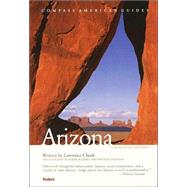
| Overview | p. 8 |
| Introduction | p. 11 |
| Deserts | p. 13 |
| Painted Desert | p. 28 |
| Mojave Desert | p. 34 |
| Sonoran Desert | p. 35 |
| Chihuahuan Desert | p. 42 |
| Mountains | p. 44 |
| An Archipelago of Rocks | p. 45 |
| Humans and Mountains | p. 50 |
| Mountains of Northern Arizona | p. 53 |
| Mountains of Central Arizona | p. 54 |
| Mountains of Southern Arizona | p. 56 |
| Canyons | p. 60 |
| Grand Canyon | p. 60 |
| Paria Canyon | p. 71 |
| Canyon de Chelly | p. 72 |
| Oak Creek Canyon | p. 75 |
| Canyons in the Santa Catalinas | p. 75 |
| Aravaipa Canyon | p. 77 |
| Ramsey Canyon | p. 77 |
| The First Arizonans | p. 78 |
| Paleo-Arizona | p. 79 |
| "All Used Up" | p. 81 |
| "Enemy Ancestors" | p. 83 |
| The Abandonment | p. 85 |
| Hispanic Arizona | p. 93 |
| Spanish Roots | p. 94 |
| That "Mostly Mexican" Town | p. 97 |
| Hispanic Arizona Today | p. 102 |
| Exploring Hispanic Culture | p. 103 |
| Modern Indians | p. 108 |
| Visiting Reservations | p. 112 |
| The Navajos | p. 113 |
| Apaches | p. 118 |
| Yavapais | p. 120 |
| Hualapais and Havasupais | p. 120 |
| Hopis | p. 121 |
| Tohono O'odham | p. 124 |
| Smaller Tribes | p. 125 |
| Making Arizona | p. 126 |
| The Apache Wars, 1871-86 | p. 127 |
| Grazing, Farming, and Mining | p. 130 |
| Phoenix | p. 142 |
| Phoenix Attractions | p. 147 |
| Valley of the Sun | p. 150 |
| Scottsdale | p. 150 |
| Tempe | p. 152 |
| Tucson | p. 155 |
| Tucson Attractions | p. 160 |
| Arizona Towns | p. 162 |
| Bisbee | p. 162 |
| Tombstone | p. 164 |
| Tubac | p. 166 |
| Prescott | p. 170 |
| Sedona | p. 171 |
| Jerome | p. 174 |
| Flagstaff | p. 175 |
| Lake Havasu City | p. 177 |
| Yuma | p. 179 |
| Arts | p. 189 |
| Architecture | p. 190 |
| The Visual Arts | p. 196 |
| Performing Arts | p. 203 |
| Folk Art | p. 204 |
| Kitsch | p. 206 |
| Arizona Dreams | p. 209 |
| Back Roads of Arizona | p. 214 |
| Ancient Arizona Trail | p. 216 |
| Scenic Sedona Trail | p. 217 |
| Flagstaff to Prescott | p. 220 |
| Mogollon Rim/White Mountain | p. 221 |
| Apache Trail | p. 224 |
| Phoenix to Tucson | p. 224 |
| Missions and Missiles | p. 227 |
| Cochise County | p. 229 |
| Practical Information | p. 231 |
| When to Come | p. 231 |
| Getting Around | p. 234 |
| Lodging and Restaurants | p. 239 |
| Guest Ranches | p. 256 |
| Festivals and Rodeos | p. 261 |
| Museums and Cultural Attractions | p. 266 |
| Spectator Sports | p. 268 |
| Desert Photography | p. 269 |
| How to Look Like a Native | p. 270 |
| Arizona Publications | p. 270 |
| General Information | p. 271 |
| Recommended Reading | p. 272 |
| Index | p. 282 |
| Table of Contents provided by Syndetics. All Rights Reserved. |
The New copy of this book will include any supplemental materials advertised. Please check the title of the book to determine if it should include any access cards, study guides, lab manuals, CDs, etc.
The Used, Rental and eBook copies of this book are not guaranteed to include any supplemental materials. Typically, only the book itself is included. This is true even if the title states it includes any access cards, study guides, lab manuals, CDs, etc.
Excerpted from Arizona by Lawrence W. Cheek, Fodor's Travel Publications, Inc. Staff
All rights reserved by the original copyright owners. Excerpts are provided for display purposes only and may not be reproduced, reprinted or distributed without the written permission of the publisher.